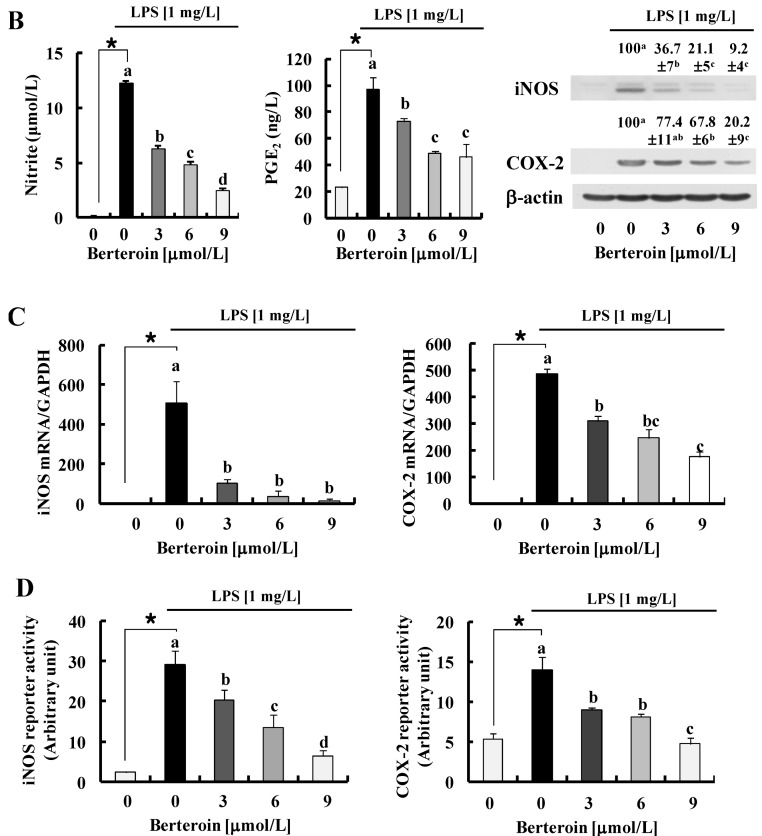Figure 1.

Berteroin inhibits nitric oxide (NO) and prostaglandin (PG)E2 production and decreases inducible nitric oxide synthase (iNOS) and cyclooxygenase-2 (COX)-2 expression in lipopolysaccharide (LPS)-stimulated Raw 264.7 cells. (A) The structure of berteroin is shown. (B–D) Raw 264.7 cells were plated in 24-well plates at 5 × 104 cells/well in Dulbecco’s modified Eagle’s medium (DMEM) and 100 mL/L fetal bovine serum (FBS), serum-deprived in DMEM + 10 mL/L FBS, and treated for 24 h with various concentrations of berteroin in the absence or presence of 1 mg/L LPS; (B) Conditioned media were collected 24 h after berteroin treatment. The concentrations of NO and PGE2 in the conditioned media were measured using the Griess reagent system and a PGE2 enzyme linked immunosorbent assay (ELISA) kit, respectively. Western blotting was conducted using an anti-iNOS, COX-2, or β-actin antibodies with total cell lysates. Photographs of chemiluminescent detection of the blots, which were representative of three independent experiments, are shown. Densities were calculated by Image J software and shown above each blot; (C) Total RNA was isolated and reverse transcribed, and real-time polymerase chain reaction (PCR) was conducted. iNOS and COX-2 mRNAs were normalized to glyceraldehyde-3-phosphate dehydrogenase (GAPDH) mRNAs; (D) Cells were co-transfected with murine iNOS or COX-2 reporter gene construct and the Renilla control vector, and the transfected cells were plated in 24-well plates at 5 × 104 cells/well. After serum deprivation, the cells were treated with the indicated concentrations of berteroin in the absence or presence of LPS for 6 h. Luciferase activity was analyzed by the dual-luciferase assay and normalized to Renilla luciferase activity. Results represent the means ± SEM from 3 independent experiments. * Significantly different from the untreated group (0 mg/L LPS + 0 μmol/L berteroin) (p < 0.05). Means with different letter (a, b, c, or d) are significantly different among the berteroin groups (p < 0.05).

